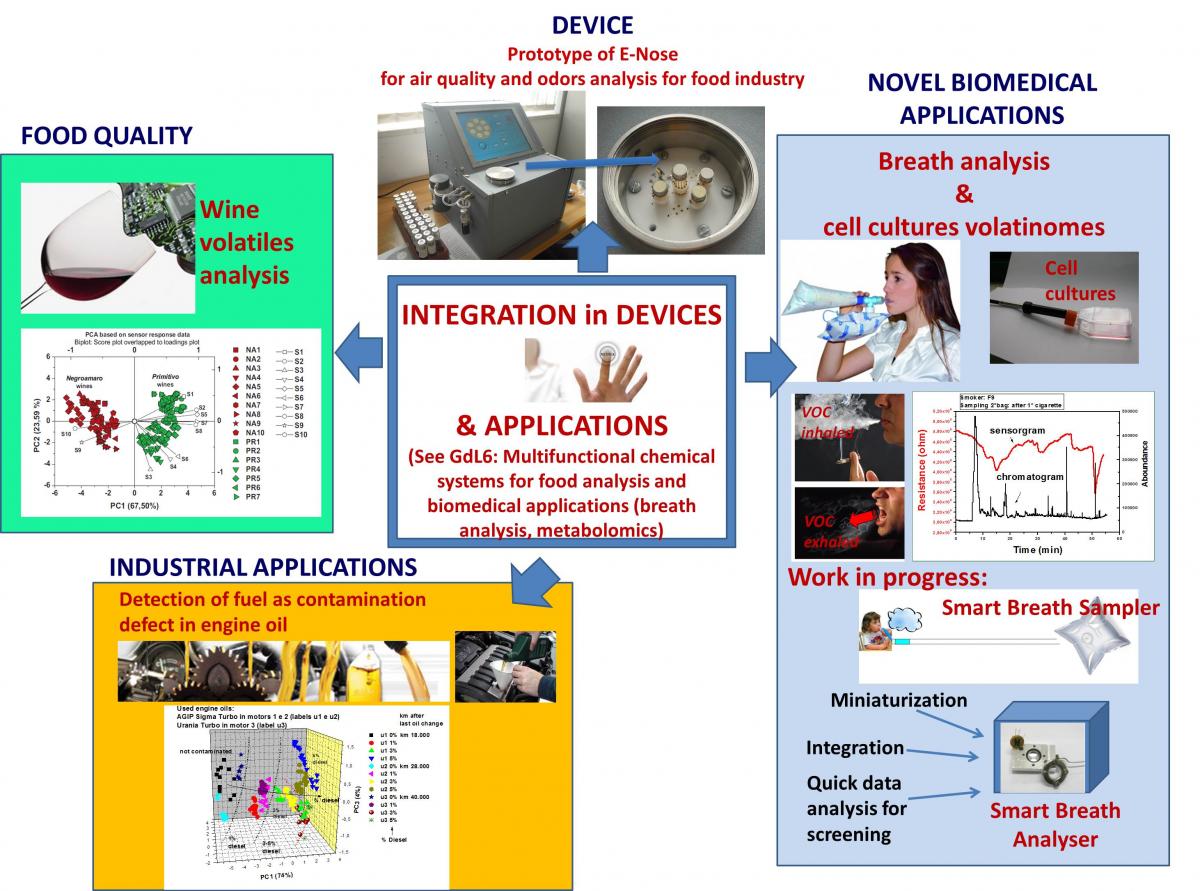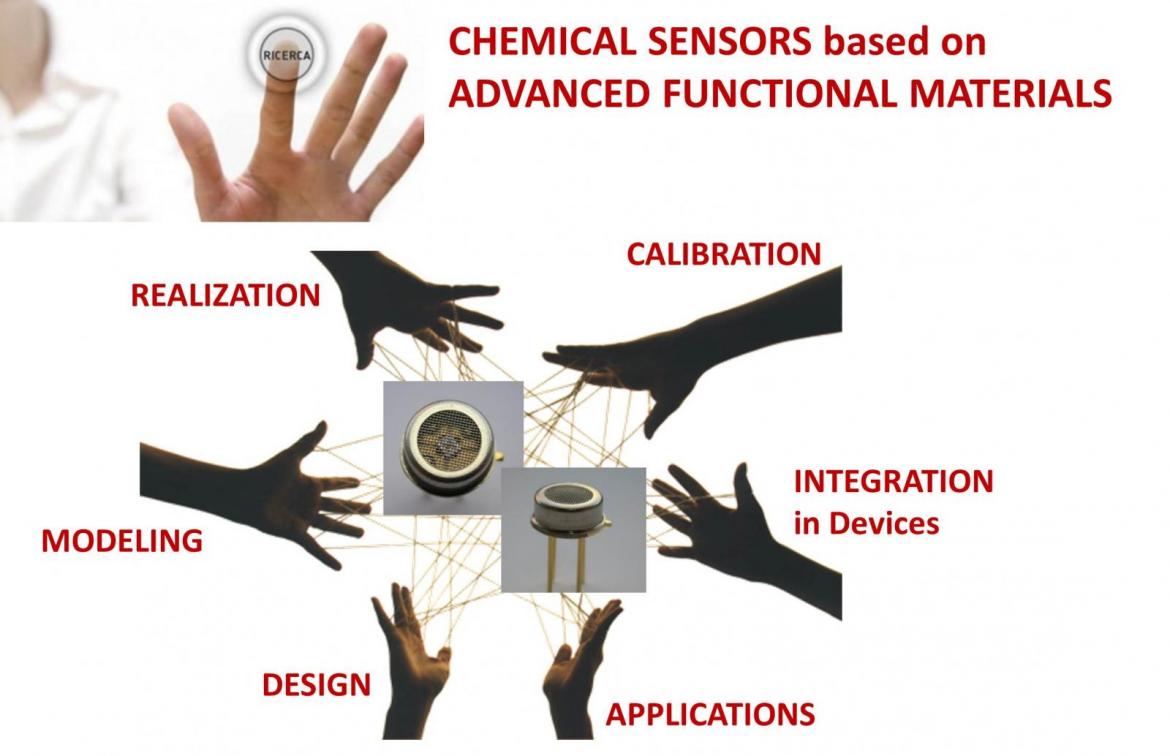
The research in the field of chemical sensors is always fascinating and challenging! It renews itself continuously according to market needs and technological advances and progresses in novel sensing materials. Major interests driving the chemical sensors market across the world are occupational safety health, hazards detection, environment pollution control, air quality analysis, food safety and quality, healthcare device and biomedical applications; this market will grow very fast in the next years since chemical sensors are expected to be integrated into smartphones and wearables, hence entering the Internet-of-Things (IoT) world.
Joining the worldwide community of R&D that has embraced the challenge of chemical sensors in such effervescent scenario, a IMM-Lecce research team contributes from time to research and development of chemical sensors and new technological solutions for chemical sensing. The main activities are focused on conductometric gas sensors for the detection of a range of chemical species and for a variety of commercial applications in array configuration. Our research program starts from Design and Modeling, continues through Realization and Calibration, achieves the Integration into Devices and flows in real field Applications.
Contact person: Simonetta Capone, simonetta.capone@cnr.it
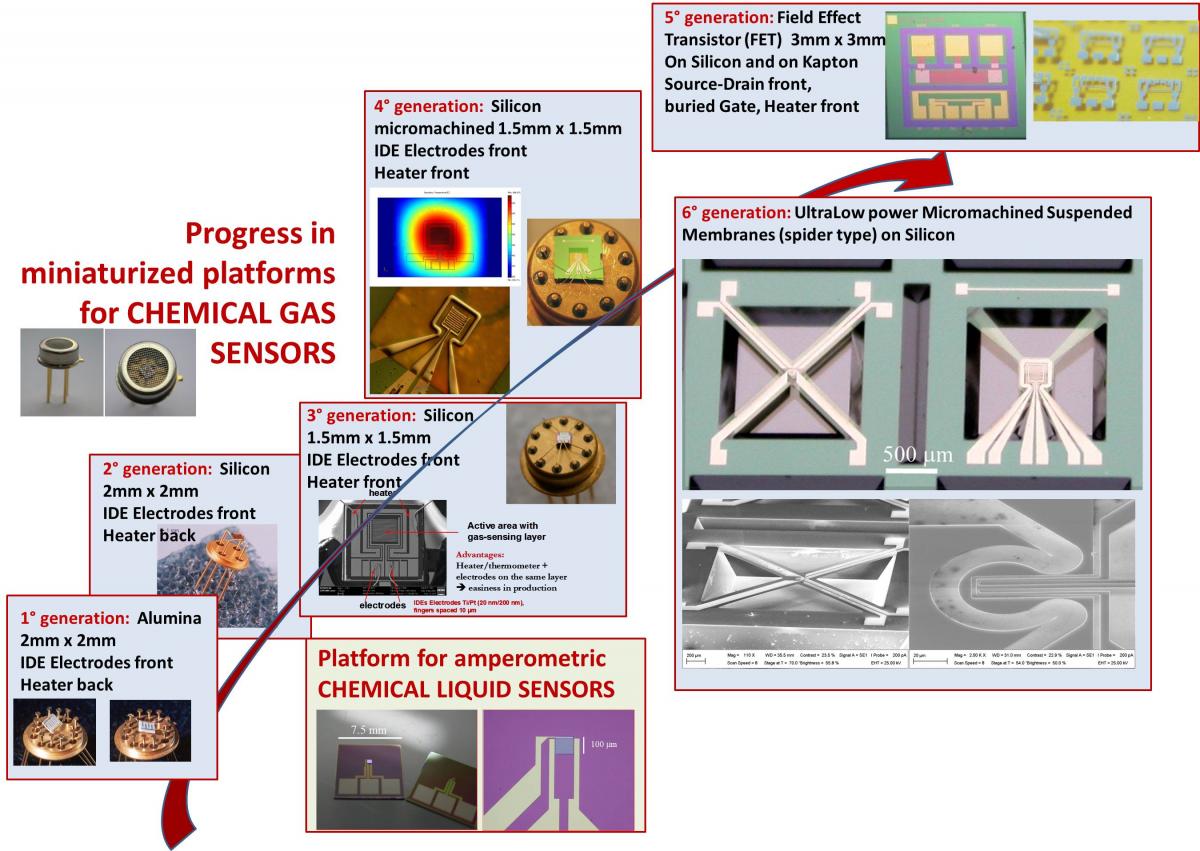
The team’s program aims to connect the development of miniaturized sensor platforms with the development of advanced functional materials that have to be integrated in such platforms. The IMM sensors are microfabricated and micromachined using Microelectromechanical Systems (MEMS) based technology to minimize size, weight, and power consumption. Mass fabrication of the sensors using silicon-processing technology is envisioned to minimize the cost per sensor. An alternative to Si-platforms is given by Kapton polyimide, an approach that looks forward to flexible gas sensors and wearable chemical systems.
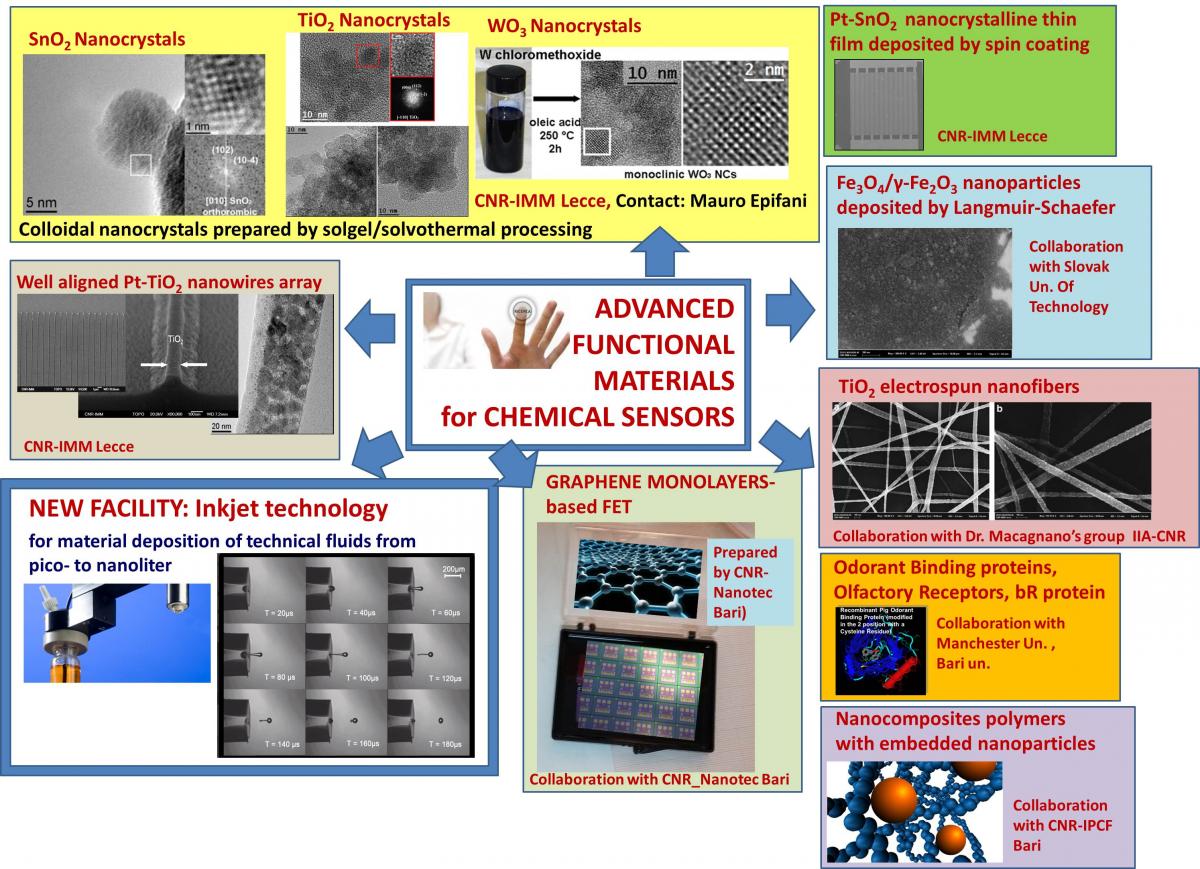
Going down to nanosize, Nanomaterials based on different semiconducting metal oxides (MOXs) nanostructures offer a new opportunity to improve sensor performance (selectivity, sensitivity, limit of detection and stability). Graphene, a one-atom-thick sheet of carbon atoms with a 2D hexagonal crystal structure, has unique properties and has shown great promise as revolutionary gas sensing material. Great expectations in gas sensing rise from a novel biomimetic approach that throws out the innovative idea to use native as well as engineered non-natural biological proteins, as Odorant Binding Proteins (OBPs) or Odorant Receptors Proteins (ORPs), as possible active elements in gas sensors of new generation.
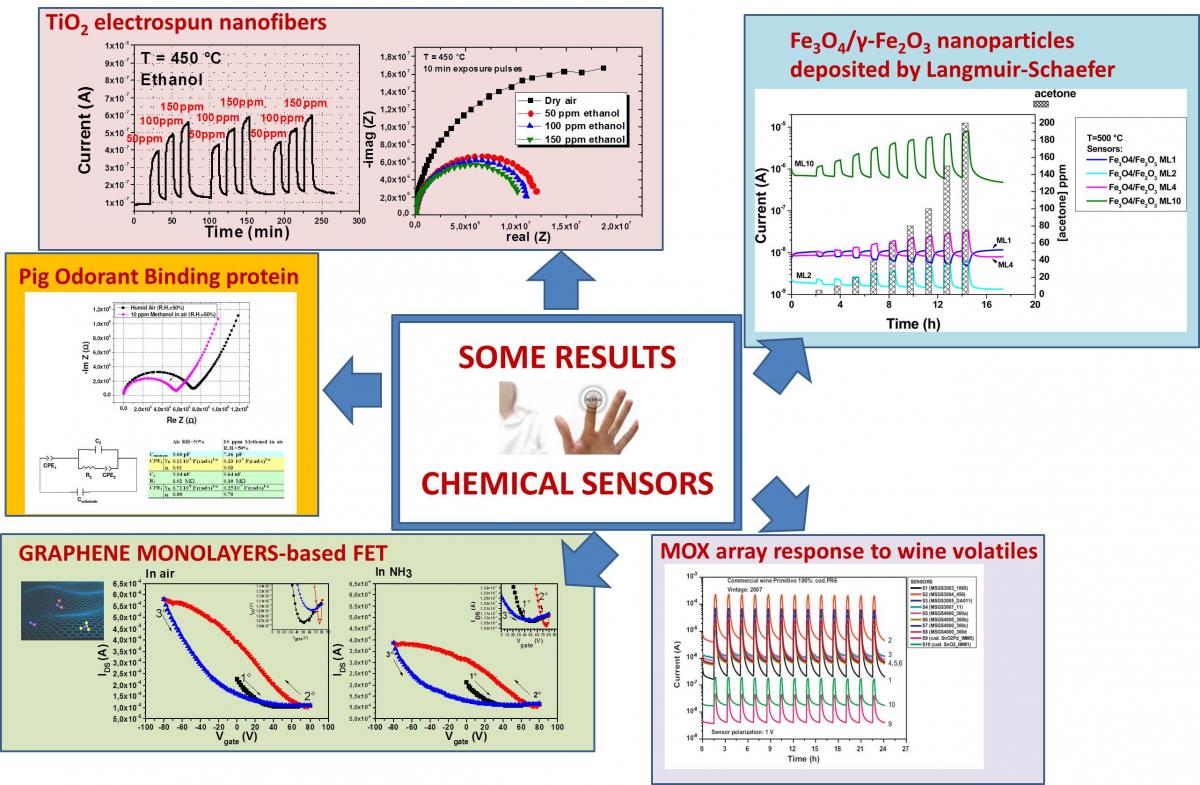
In particular our efforts are devoted to:
1) Design and realization of different types of chemical sensors:
a) chemoresistive sensors based on: a1) colloidal nanocrystals (single metal oxides MOXs: SnO2, TiO2, WO3, ZnO, In2O3; metal-doped MOXs; surface modified and/or nanocomposites MOXs: TiO2-V2O5, TiO2-WO3) prepared by solgel/solvothermal processing; a2) mixed (Co, Pd, Au) & Fe3O4/γ-Fe2O3 nanoparticles-based Langmuir-Schaefer (LS) films .
b) impedimetric chemical sensors based on biomimetic materials: Odorant Binding Proteins (OBPs) and Olfactory Receptors (ORs), bacteriorhodopsine (bR) protein.
c) Development of Field Effect Transistors (FETs) chemical sensors based on pristine and functionalized graphene based materials.
d) Development of capacitive-trasdution chemical sensors based on nanocomposites polymers with embedded nanoparticles (NPs) on planar interdigitated miniaturized platforms.
2) Characterization of the different types of chemical sensors: electrical/dielectric (DC/AC measurements, electrical impedance spectroscopy) and structural/morphological characterization (XRD, EDS, SEM/FEG, AFM, HRTEM, FIB).
3) Calibration of the different types of chemical sensors by functional characterization under in controlled environment (flow, analytes concentration, humidity, temperature, headspace sampling, breath sampling) targeted towards various specific applications.
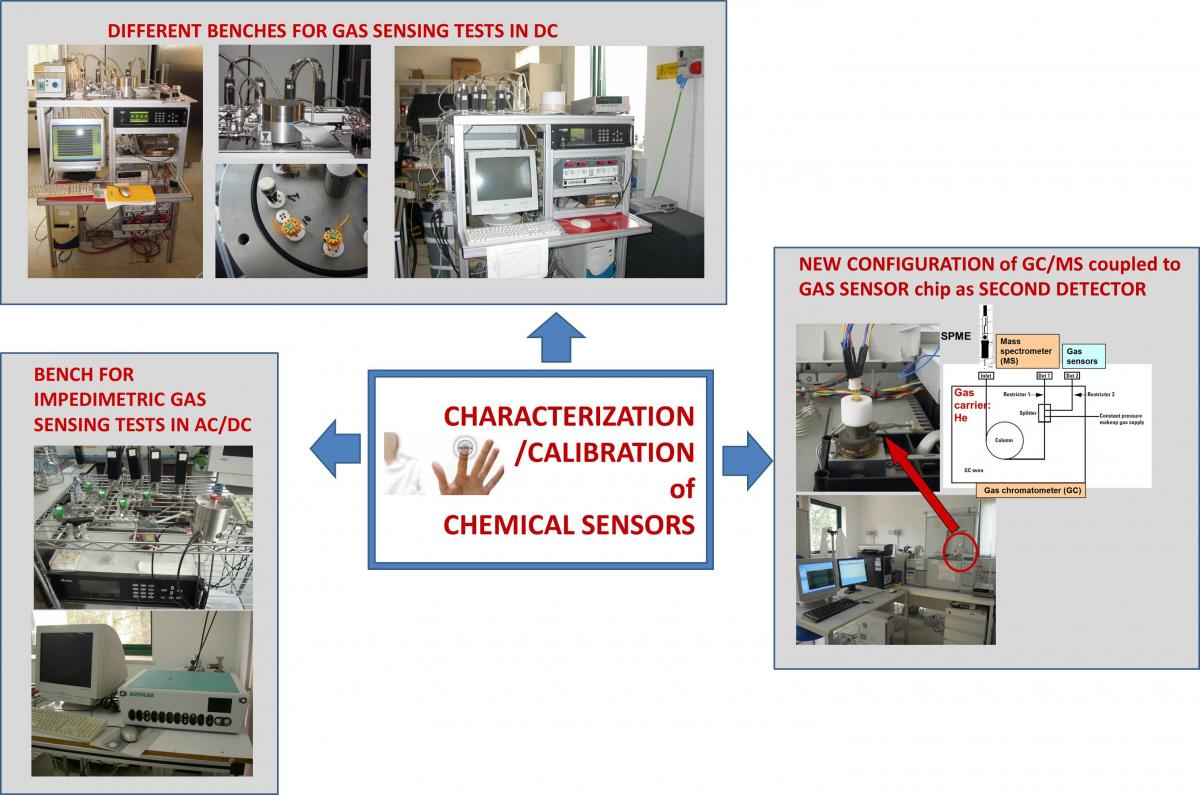
The Integration of singles sensors in Devices and sensor arrays in Electronic Noses prototypes is an on-going activity of this group. We are studying the application of multifunctional chemical devices in different fields: air quality, auto industry, pollutants control, food quality and safety, breath analysis and volatile metabolites detection for disease diagnostics in biomedical applications. For details see GdL6: “Multifunctional chemical systems for food analysis and biomedical applications (breath analysis, metabolomics)”.
